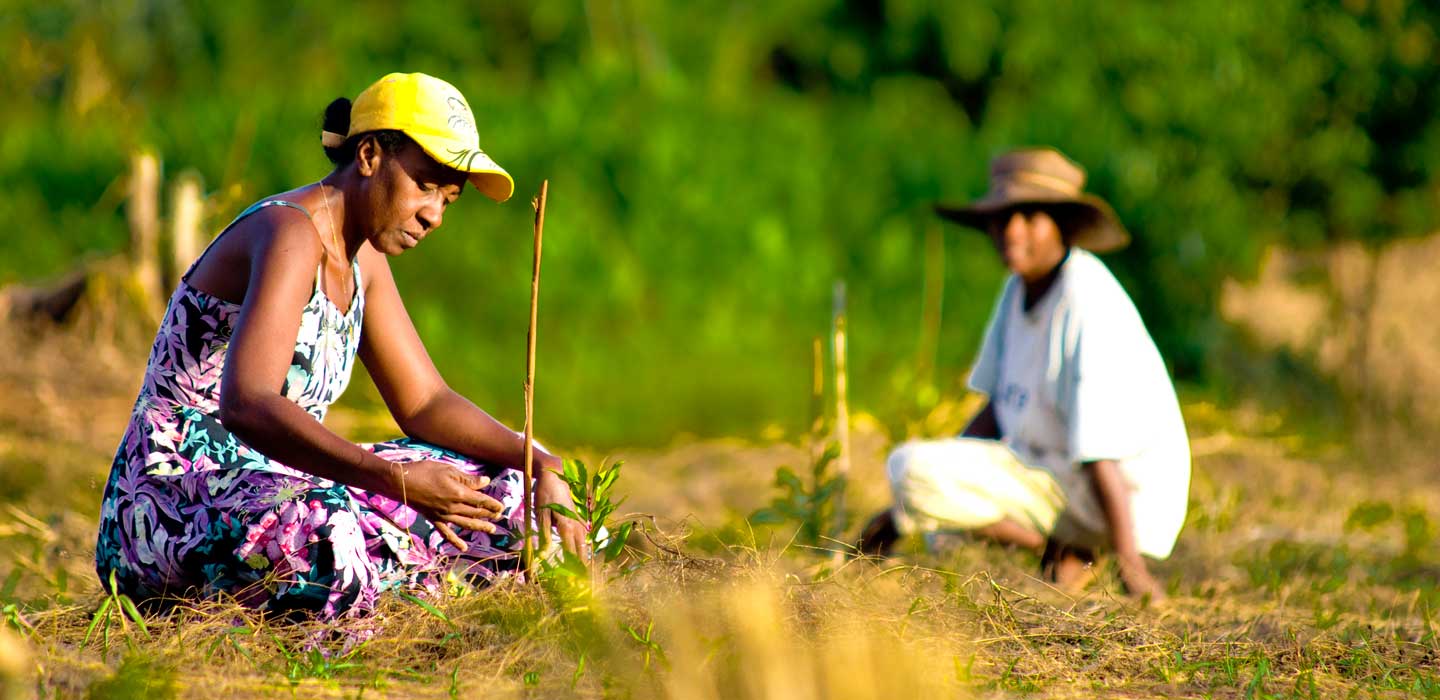How to improve impact evaluations of land tenure interventions in IFAD-supported projects
IFAD Asset Request Portlet
Asset Publisher
How to improve impact evaluations of land tenure interventions in IFAD-supported projects
Estimated reading time: 3 minutes
Members of a local cooperative plant clove seedlings in Ambatoningiara village, Madagascar. ©IFAD/R. Ramasomanana
In recent years, there has been a growing understanding of the important role of tenure security and equitable access to land and natural resources for rural development. The inclusion of land tenure-related indicators in the Sustainable Development Goals (SDGs) and in particular in Goal 1 (SDG Indicator 1.4.2) has drawn increased attention to the topic. As IFAD and other donors, governments and civil society organizations have increasingly invested to improve tenure security and governance, the demand for tenure-related data and evidence-based decision making has also grown. In relation to impact evaluations, land tenure interventions have so far lacked a common framework of reference, to investigate whether the expected outcomes are realized. To address this gap, an initiative led by IFAD and its partners has produced a set of guidelines to inform the design of impact evaluations of land tenure interventions and support improved data collection. This initiative has allowed for a community of land tenure and impact evaluation experts to develop through knowledge sharing and training events.
Land tenure interventions in IFAD-supported projects
One of the strengths of IFAD-supported projects is to address rural development challenges using a variety of approaches. Each approach is designed to tackle a different issue, but they all work together to achieve a common development goal. Among these approaches, interventions aimed at improving land tenure security and governance are some of the most interconnected to other thematic areas. Depending on the context, they can support rural women’s and youth’s path towards entrepreneurship, define users’ access to water, protect forests, support improved climate change resilience, and much more. While there is a general understanding of the importance of investing – even a small percentage of a project’s budget – on improving tenure security, the interconnected nature of land tenure interventions constitutes a challenge when it comes to quantifying the actual impact that those interventions have on the overall project outcomes. In the context of IFAD’s portfolio, an improved understanding of the impact of land tenure interventions would clearly improve the design of future interventions, the monitoring of the land tenure activities across projects, and lead to an increased understanding of the value of investing in such activities.
The guidelines for impact evaluation of land tenure and governance intervention
Understanding the importance of the issue, IFAD, with its partners, has supported an effort to address the question of how to improve the evaluation of the impact of land tenure interventions, through a grant which brought together experts in impact evaluation and land tenure. The initiative has led to the creation of a comprehensive set of guidelines on how to conduct impact evaluations of land tenure interventions. The guidelines are a versatile tool to allow IFAD as well as other organizations and researchers to design and conduct impact evaluations of land tenure activities. Ultimately, this should broaden the amount and improve the quality of evidence of what works, what does not and why, when interventions are aimed at improving land tenure and governance. The guidelines, which were published in early 2019, highlight existing knowledge gaps, outline a comprehensive theory of change based on the existing literature and suggest best practices for future impact evaluations. They were developed thanks to a partnership between IFAD and the Global Land Tool Network, and benefitted from wider consultations with MCC, World Bank and Landesa.
Building a community of evaluators and tenure experts
This year marks the final months of this initiative, and the year in which IFAD and its partners are more engaged than ever in bringing the land tenure community and the impact evaluation community together to address the challenges and opportunities of impact evaluations of land tenure interventions. We have introduced the guidelines as an open, living document around which a community of practice can gather and grow. First at the Land and Poverty Conference in Washington D.C., then at the PRiME training in Istanbul, and soon at the LANDac Conference in Utrecht, we have reflected on how the Guidelines can be used in practice to shape impact evaluations of rural development projects. By bringing together experts from different fields and organizations, this innovative joint initiative is contributing to the global discussion on the importance of tenure security in the context of the SDGs. As the Guidelines have proven a flexible framework which can be adapted to the needs of different projects and organizations, we believe that the lessons learnt can be of assistance to other thematic areas that are addressing similar increased demand for evidence-based project design and implementation.
Publication date: 28 June 2019
